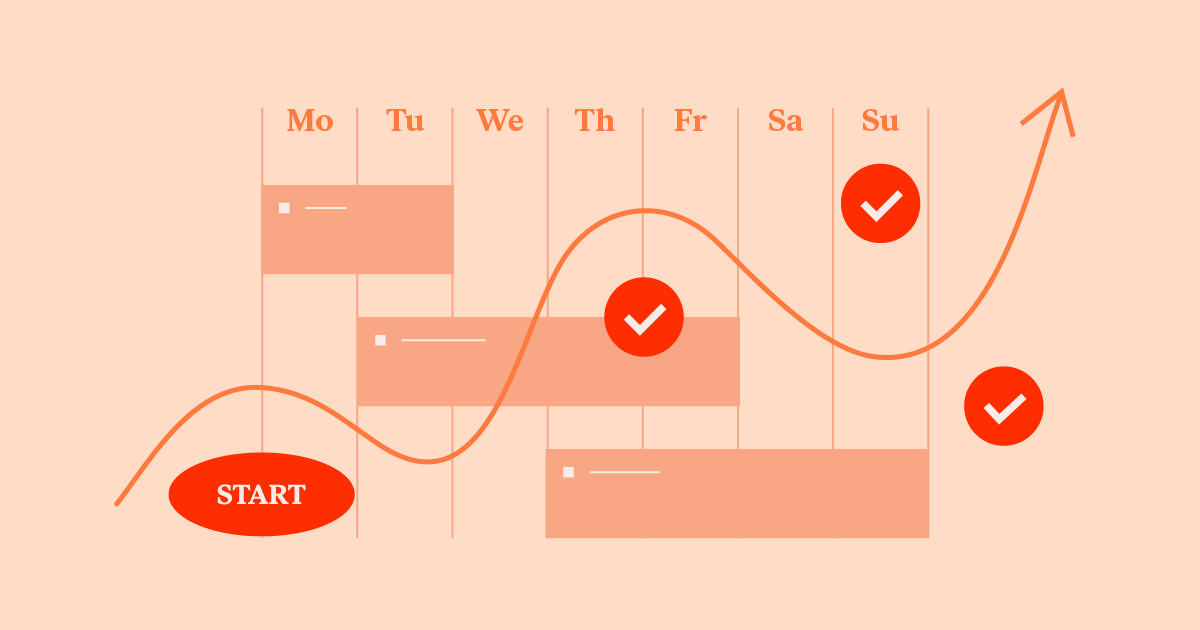Our time is precious. It’s the only resource that we can’t get more of. We could start a philosophical debate on this issue, exploring the in and outs of this statement, but we’ll focus on the professional aspect of time. More specifically, how precious time is when you spend it on work.
We get paid for our work — for the hours we put into different projects. Every wasted minute could have been spent on earning more money. That’s why time management is very important.
However, when dealing with the topic of time management tools, there’s a trend of focusing mainly on time tracking and task management tools. They are certainly a major part of it, but there are also other tools that can help you make more efficient use of your time. Tools that cover issues like client communications, distraction removers, and others.
The following 10 recommendations are going to help you chip away at all those areas where professional and in particular, web designers, lose a lot of time.
Table of Contents
Grow Your Sales
- Incredibly Fast Store
- Sales Optimization
- Enterprise-Grade Security
- 24/7 Expert Service

- Incredibly Fast Store
- Sales Optimization
- Enterprise-Grade Security
- 24/7 Expert Service
- Prompt your Code & Add Custom Code, HTML, or CSS with ease
- Generate or edit with AI for Tailored Images
- Use Copilot for predictive stylized container layouts

- Prompt your Code & Add Custom Code, HTML, or CSS with ease
- Generate or edit with AI for Tailored Images
- Use Copilot for predictive stylized container layouts
- Craft or Translate Content at Lightning Speed
Top-Performing Website
- Super-Fast Websites
- Enterprise-Grade Security
- Any Site, Every Business
- 24/7 Expert Service

Top-Performing Website
- Super-Fast Websites
- Enterprise-Grade Security
- Any Site, Every Business
- 24/7 Expert Service
- Drag & Drop Website Builder, No Code Required
- Over 100 Widgets, for Every Purpose
- Professional Design Features for Pixel Perfect Design

- Drag & Drop Website Builder, No Code Required
- Over 100 Widgets, for Every Purpose
- Professional Design Features for Pixel Perfect Design
- Marketing & eCommerce Features to Increase Conversion
- Ensure Reliable Email Delivery for Your Website
- Simple Setup, No SMTP Configuration Needed
- Centralized Email Insights for Better Tracking

- Ensure Reliable Email Delivery for Your Website
- Simple Setup, No SMTP Configuration Needed
- Centralized Email Insights for Better Tracking

- Ensure Reliable Email Delivery for Your Website
- Simple Setup, No SMTP Configuration Needed
- Centralized Email Insights for Better Tracking
10 Best Time Management Tools for Web Designers
With good time management, you’ll gain a whole host of benefits:
- Spend more time on client work instead of non-billable admin tasks.
- Put an end to working long hours or weekends to play catch-up.
- Get more done and do so in a much shorter time than you could before.
- Stop taking things day-to-day and start working with a long-term mindset.
- Streamline your workflow and more easily manage simultaneous projects.
- Be more confident in taking on new clients, scheduling projects, and meeting deadlines.
- Feel less stressed and, in turn, boost focus and creativity.
That said, a good productivity strategy is only useful if you have the right tools to implement and manage it. So, let’s take a look at the apps you’re going to need:
1. Freedom

It doesn’t matter if you’re a web designer or a web developer. By working online all day, you’re exposed to distractions everywhere you go — email, social media, news sites, mobile apps, and more.
Freedom gives you the ability to decide when you’re free to roam the web, which websites or apps are off-limits, and which devices to restrict your access on. Unlike some other distraction blocker apps, this one works on all major devices.

One potential drawback is that it requires a bit of setup if you want to get good results from it. For instance, Freedom has four different browser extensions to install:
- A calming green screen
- A pause button
- A time limit button
- An insight button
It also has a couple of things that need installing if you use it on your smartphone. While it comes with a premade Distracting Websites list and daily time limits, you’ll need to spend time creating your own list of distractions to block, too.
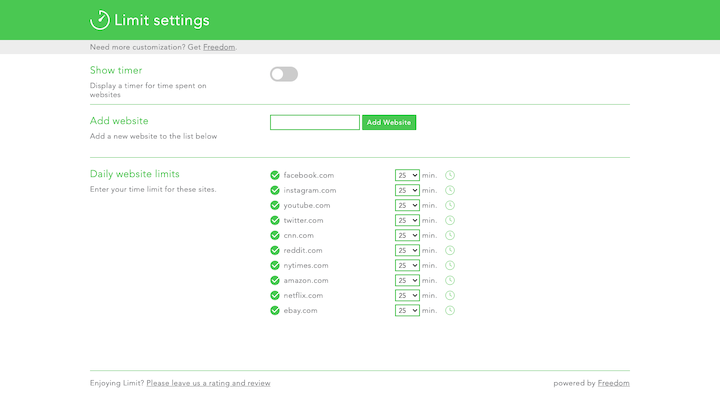
But, once you’ve set this up, it could be very useful — and not just for when you’re working. For instance, if you want to limit how late or early you’re able to check your work email or log into social media, you can set restricted hours and make them recurring.
Of course, a tool this good isn’t going to be free to use. Freedom costs $6.99 a month on the monthly plan, $2.42 a month on the yearly plan, or a flat fee of $129 for forever access.
2. Boomerang for Gmail

When it comes to email, you might need more refined controls.
For instance, what do you do about sending an email if your access to Gmail is completely restricted? With Freedom, you can “unpause” a restricted site, but you don’t want to get into the habit of doing that.
Instead, you can use Boomerang for Gmail. It’s a browser extension that adds some unique email management features to Gmail.
The main feature of this extension is the inbox pause. Any messages that come in get held aside in a queue. It’s only when you unpause your inbox that you see everything that came in.
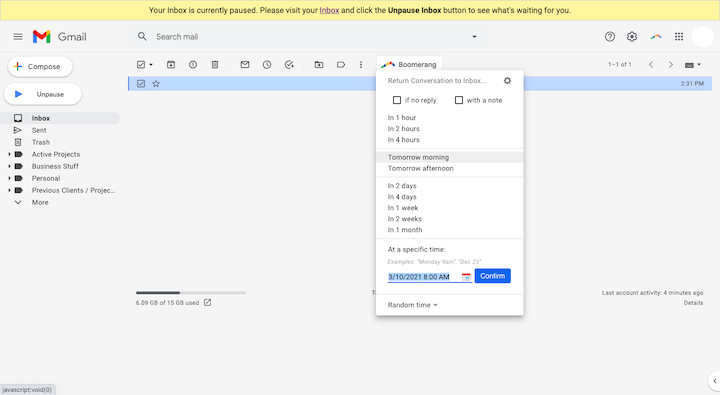
In addition, Boomerang allows you to schedule your emails for a later time. You can also schedule an email to return to your inbox when you’re actually available to deal with it or to send you a reminder if you haven’t fully resolved it.
The biggest drawback of this tool is that it only works for Gmail.
Boomerang does have a free plan, but it’s limited in use. You’d be better off upgrading to the Personal plan for $4.99 a month if you’re a Gmail user or to the Pro plan for $14.99 a month if you use G Suite.
3. Toggl Track

Time trackers are useful time management tools, though perhaps not for the reasons you might expect.
Yes, a time tracker like Toggl helps you keep tabs on how many hours you work and where your time goes. But let’s say you track your time for a month. You’ll get more than enough data to help you figure out how long your most common tasks take.
If you know exactly how long each task takes from job to job, you can more accurately schedule your projects and, more importantly, meet deadlines.
What’s more, you can do a better job of ensuring you charge the right amount of money for each job you work on.
The only drawback to using Toggl Track is that the analytics aren’t available unless you upgrade to one of the premium plans, which starts at $9 a month.
4. ClickUp
Designed for visual planners and thought leaders alike, ClickUp is a project management platform that combines many different views and customizable controls to create your perfect workflow. It can help organize both simple and complex projects and manage your team.
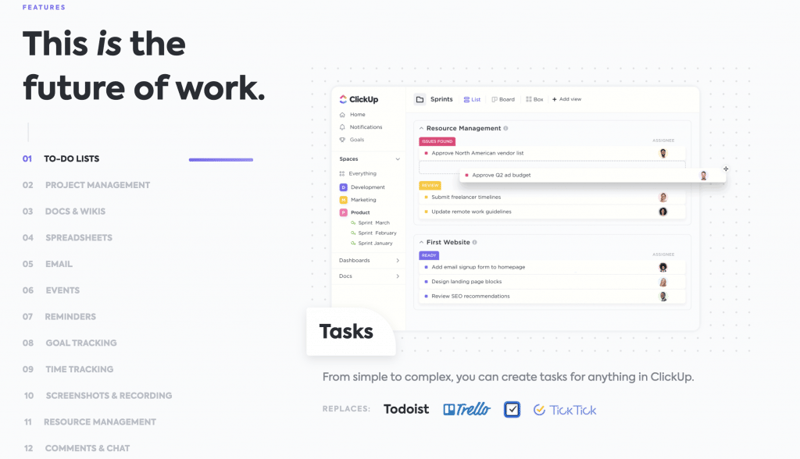
ClickUp promises to help save you one day a week, with intuitive task creation, hierarchical workflow, and annotation features to give and receive feedback directly on images and designs. Additionally, with guest permissions, you can invite clients and contractors directly into your workflow without compromising your internal records or purchasing another app.
While ClickUp can nearly replace all your work apps, you can use the Embed view to bring third-party apps if you find yourself in need of them. Plus, with 1000+ integrations, you can sync all your apps with ClickUp for seamless connections! If you’re after automations that will simplify every step of your process from start to finish, you’ll find them here.
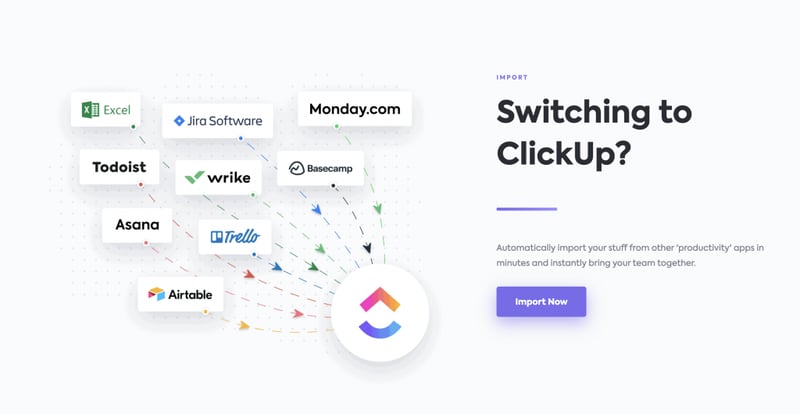
There are five different Plans to choose from, including a Free Forever plan that includes most essential project management features for designers. However, if you need more premium features, such as reporting tools or even custom branding features, you can upgrade to a paid plan, starting at $5/month.
ClickUp offers multiple user roles so you can bring guest users, team members and administrators to your Workspace. You can share and privatize tasks in a few simple clicks, and your team will appreciate the freedom to delegate assignees and tasks to ensure they meet those project deadlines.
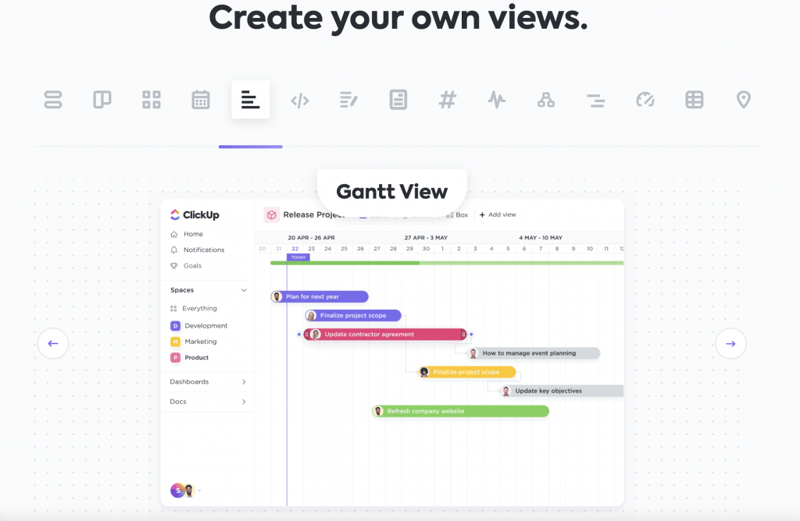
With Kanban boards, custom-built forms, sprints, email capability directly from the platform and even more key features, ClickUp is a powerful productivity platform web designers should consider.
5. Harvest

Harvest is another time tracker option, but it has more features than Toggl does. For example, you can:
- Connect to your proposal/contract generation software and automatically create invoices for your project milestones.
- Integrate with task management software and track your time without having to leave the app.
- Generate invoices from your tracked time and automatically send them through your payment processing software.
While Harvest is a great tool for time-tracking and it will simplify some of your admin work, it’s a better time management tool for design agencies. So, if you currently have a team working for you or you intend to hire in the future, this is the time-tracking tool to consider.
Pricing is simple. It’s $12 a month per user.
6. AND.CO
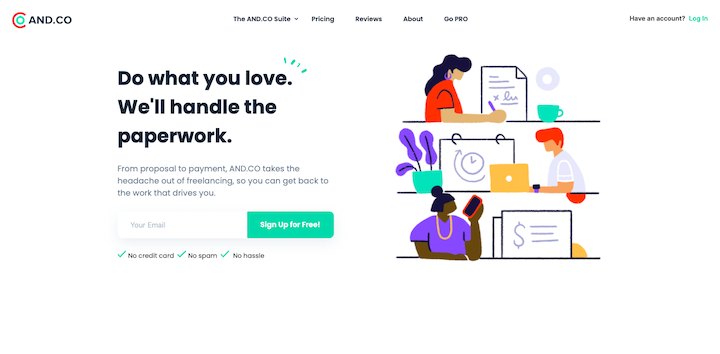
As you find potential clients to work with and spend time talking to them about your web design services, you’ll eventually get to a point where they ask for a proposal.
This is just one of the many time-saving tools AND.CO can provide you with.
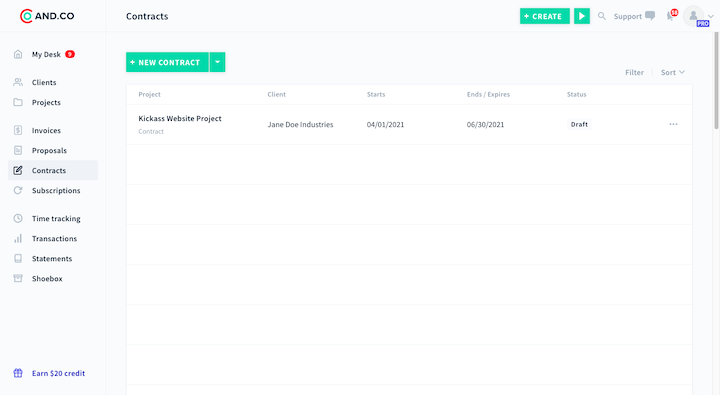
At its core AND.CO is a proposal and contract generation software. It makes light work of the whole process, too. All you need to do is enter details about who the client is, what the terms of the agreement are, and sign it.
The software takes care of preparing the rest of the legal documentation for you. So, that’s just one time-saving feature.
AND.CO also comes with a built-in timer.
If you remember to associate your tracked time to an open contract, you can painlessly create invoices for your clients. If you’re billing per hour, that is.
Even if you can’t use that invoicing feature, that’s okay. AND.CO can generate invoices based on the milestone payments you stipulate in your contracts — this includes the upfront deposit as well as the final payment upon completion of the website deliverables.
Either way, it’ll help you get paid for the work you do.
AND.CO does have a free plan. However, if you upgrade and pay the $18/month, you can remove the AND.CO branding from your contracts and also edit them (in case there are extra clauses you want added in).
7. Pomofocus.io
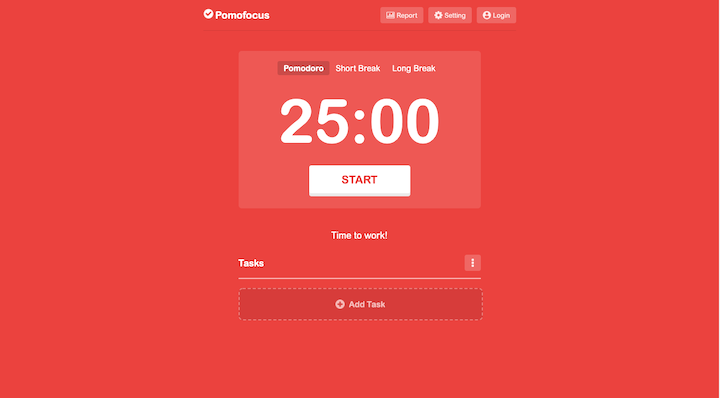
This is a different type of timer than the ones we’ve seen on this list. Pomofocus is a timer built specifically to help web designers use The Pomodoro Technique.
The timer runs for 25 minutes. At the end of it, you’ll take a 5-minute break. You’ll do three intervals of this. On the fourth, you’ll get a longer break of 15 minutes.
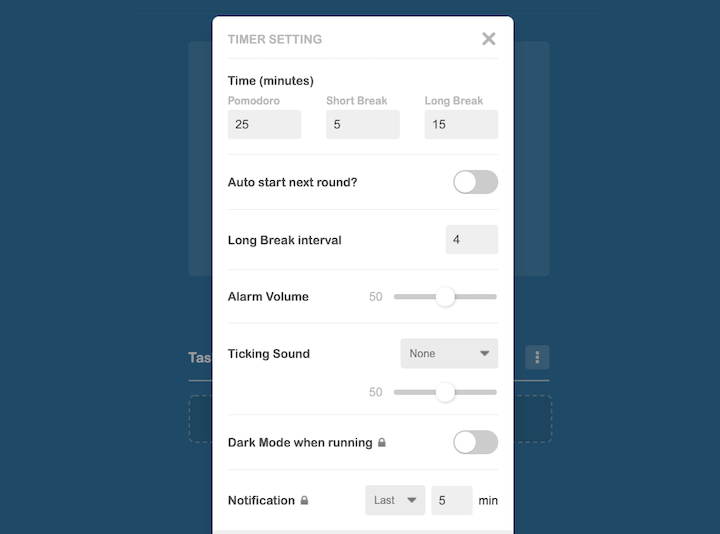
Just keep in mind that your schedule is yours to create.
Traditionally, the Pomodoro Technique uses 25 minutes on and 5 minutes off. However, if you feel like 25 minutes isn’t enough to get a substantial amount of design work done, you can change the settings.
This tool is completely free to use, so give it a go and see if it helps improve your focus.
8. Float
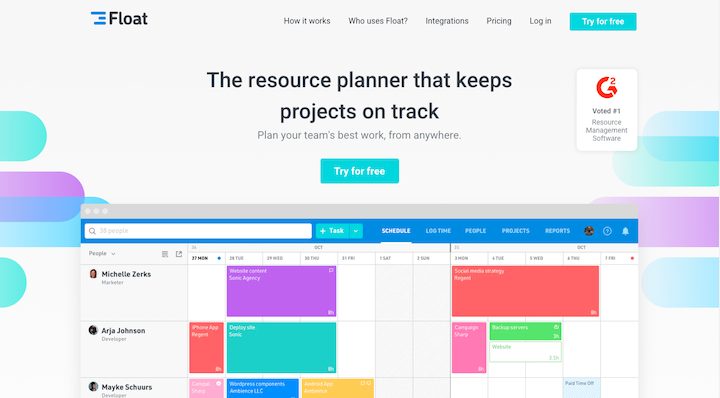
Float is a project scheduler tool, so it’s a little different than task management software.
One major differentiator is that it allows you to put tasks into your calendar with a specific amount of time allotted to them. With a lot of task management apps, all you can do is set a start and end date, which can make it difficult to schedule the right amount of work each day.

With Float, your tasks take up as much space in your calendar as they’ll actually take during your workday, so you can stack tasks and spread them out over multiple days if needed.
Another great feature is the schedule setting.
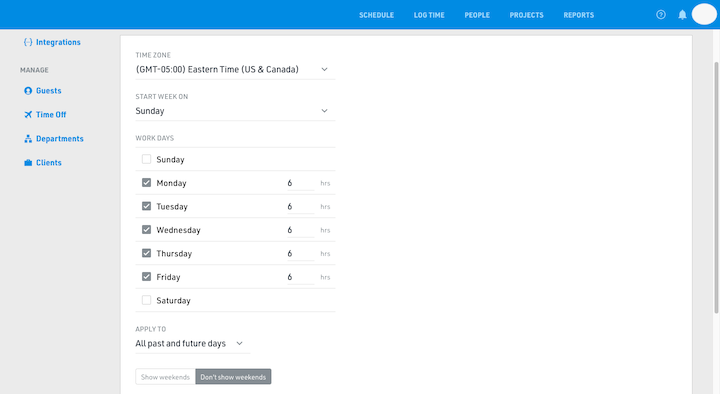
You can hide your weekends, so you’re not tempted to do “overflow” work then. You can also set a cap on how many hours you work each day. If you’re trying to be more focused and productive during the day, giving yourself a limit like this will definitely help.
In terms of cons, Float isn’t going to do a whole lot in terms of managing clients, processes, or documentation. This is strictly about building out your ideal schedule and sticking to it.
If this is something you feel you need help with and you like the way it allows you to schedule tasks, it costs $6 a month per user or $10 if you want to add a time tracker.
9. Trello
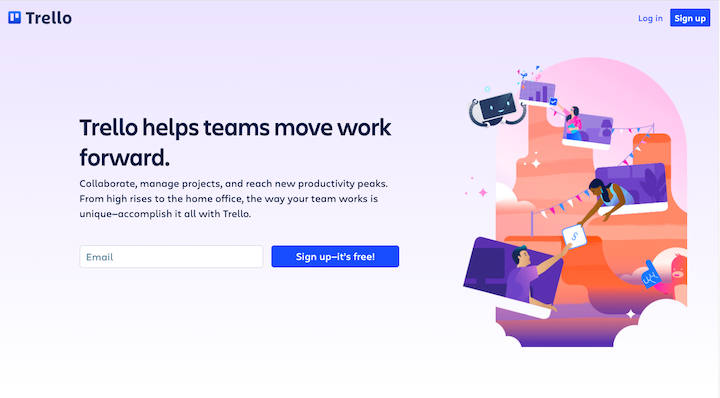
It’s really important to use a project management tool to ensure that things don’t slip through the cracks and that you work more efficiently when managing numerous clients and jobs simultaneously.
There are certainly a lot of great options out there to choose from. However, Trello stands out for its flexibility. Here’s why that’s important:
Take 2020, for instance, where 82% of freelancers said that the pandemic forced them to change how they worked. If you’re using a project management tool that doesn’t enable your business and processes to quickly pivot, it’s going to slow you down.
Trello allows you to work in whatever way suits you best. You can organize your documentation and tasks with cards. You can also create template boards (from pre-made templates or your own) that save you time in kicking off new jobs or carrying out processes in full.

With a premium subscription, you can unlock Trello power-ups and manage your tasks from different views, like a calendar or timeline.
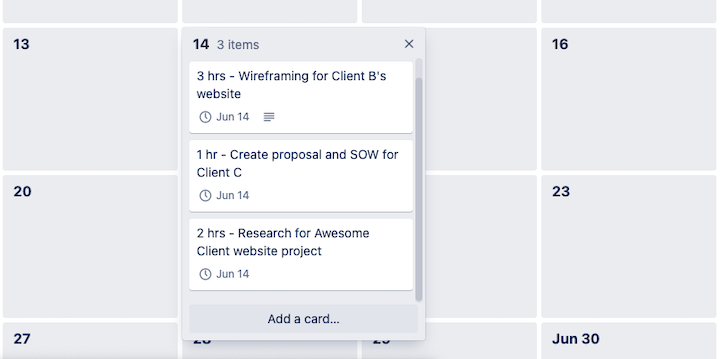
Power-ups also allow you to integrate with your other business software, like Google Drive, Dropbox, and Slack. In addition, Power-ups help you automate your most common tasks in Trello.
Because Trello is part of the Atlassian suite of products, including Jira and Confluence, you’ll get access to a whole suite of useful web designer tools when you sign up.
Trello is free to use out of the box and there’s a lot you can get done on the free plan. However, if you want to use this to optimize your time, the upgrade of $5 per month for Trello Gold or $10 per month for Business Class is worth it.
10. Zapier

From the moment you started your web design business, you were probably thinking about all the software you were going to need to run your business.
Your list of tools has probably grown quite a bit since then. That’s why you might not even be thinking about your business software when it comes to your time management strategy. You’re so used to using them as standalone solutions for accounting or appointment scheduling or other mundane admin tasks.
However, I bet most of those tools have a list of integrations and I also bet that Zapier is on most of those lists.
That’s because Zapier can help you connect processes between your most commonly used tools. For instance, if you look at the following Zapier dashboard, you’ll see that it has pre-established “Zaps” (connected workflows) between my most commonly used apps:

If you can’t find a premade workflow, build your own. For instance, here’s one way in which you could connect your Toggl timer to your accounting software:
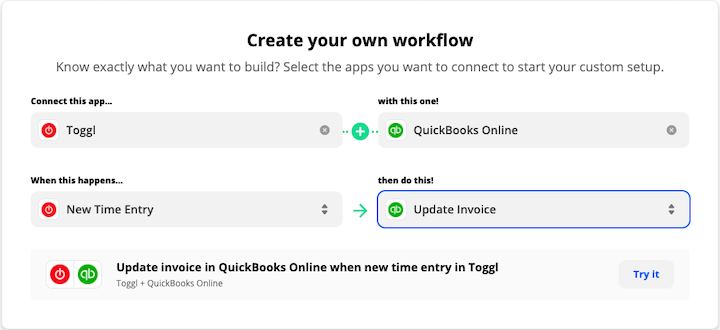
There are a lot of possibilities here, so take it one step at a time. Make a list of your most time-consuming admin tasks and the tools you use to perform them (if any at all). Then, start going through Zapier to see what it can do to automate those time-consuming workflows for you.
Zapier is free to use up to 5 Zaps and 50,000 tasks. Anything more than that will require an upgrade. Monthly plans start at $19.99.
Save Time and Money With a Proper Time Management Tool
As you can see, there are many time management tools for web designers, even if they aren’t built explicitly for the task of time tracking.
Many of these will help you focus on your work, avoid unnecessary time-draining actions and distractions.
Now that you’ve started thinking more creatively about how to become more productive, it’s time to make it your reality.
Looking for fresh content?
By entering your email, you agree to receive Elementor emails, including marketing emails,
and agree to our Terms & Conditions and Privacy Policy.
